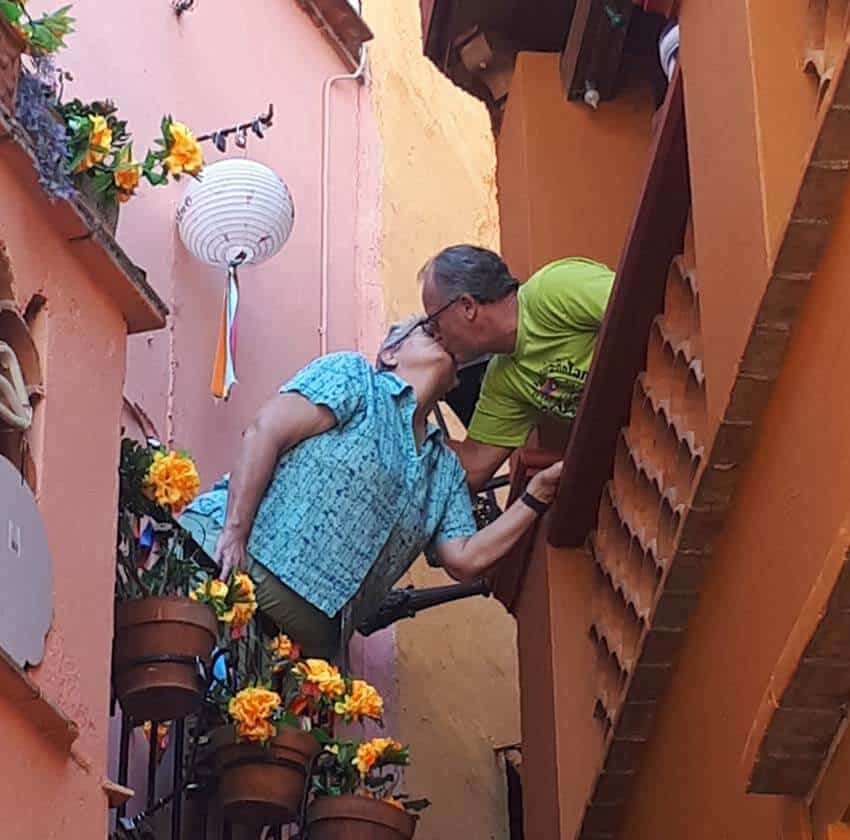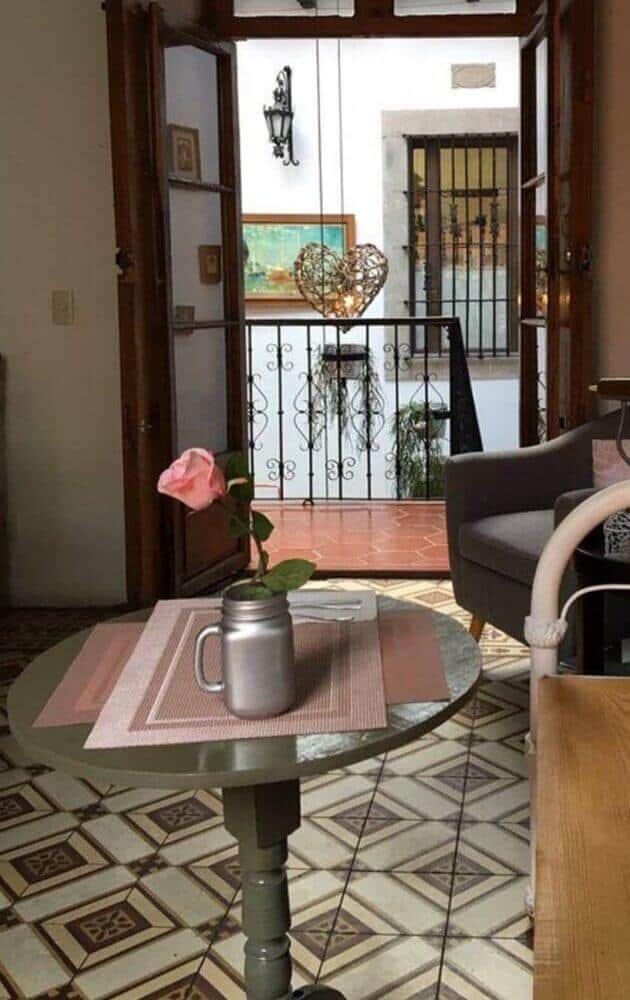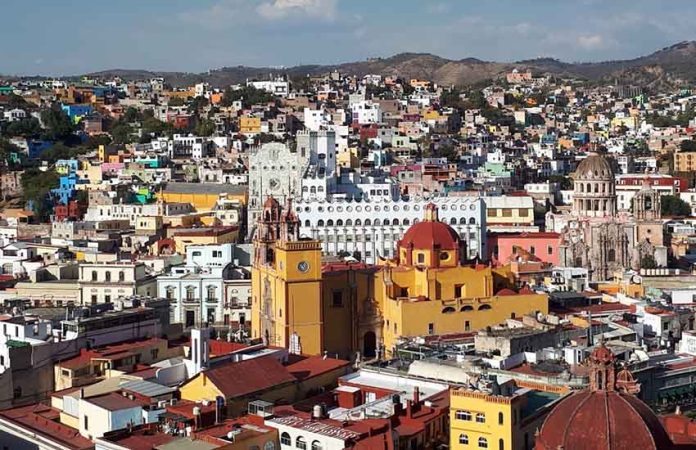The city of Guanajuato, is a city like no other I have ever known.
In 1548, a prospector discovered silver in the mountains surrounding what today is the capital of the state by the same name. By the mid-1700s, Guanajuato had become the wealthiest city in Mexico. The owner of the La Valenciana mine paved the path from his house to the nearby church with gold so that his daughter would not have to touch the soil on her way to be married.
Built in a narrow valley between the mountains that made it rich, Guanajuato offers the visitor a beautiful example of the art and architecture of the age of the Spanish viceroys and plenty of history, culture and gastronomy.
One imposing edifice is the Alhondiga de Granaditas, which played a key role during Mexico’s war for independence from Spain.
Spanish forces had turned the former grain storage into a fort. In 1810, it is said, a group of revolutionaries led by a worker from the mines nicknamed “El Pipila” stormed the fort. From the safety of this nearly impenetrable building, the soldiers shot and hurled fire and rocks on the mob trying to enter, so “El Pipila” strapped a large slab of rock to his back to shield himself and with a torch made his way to the fortress. He burned the door down and the intruders took the fort.

Today, the building has been turned into a history and art museum with a focus on the state of Guanajuato. A colossal statue of “El Pipila” overlooks the city from a nearby hill. You can visit the statue for a great view of the city by taking the funicular located behind the Juárez theater.
Guanajuato features a series of narrow alleys that wind their way through the center. The most famous of these is the Callejón del Beso (Alley of the Kiss), where a wealthy mine owner and his daughter lived. A simple miner and his son lived in the house across the alley. Only 27 inches separated the balconies of the two homes.
One day, the girl’s father surprised her in the middle of kissing the neighbor’s son across their balconies. Furious, he told her he would rather kill her than see her marry beneath her station. But young love would have its way.
Once again, the two were found leaning across the 27 inches and kissing. Enraged, the father stabbed his daughter to death. Soon afterward, the lovestruck young man also committed suicide rather than live without the love of his life. It is said that if two lovers kiss on this spot, they will be together forever, a legend that attracts couples to recreate the kiss or take selfies in the alley below the balconies. Addresses are difficult in Guanajuato because of the rabbit warren of streets, but just ask anyone for directions to the Callejón del Beso and they can direct you.
Today, the city’s alleyways come alive with merry tunes as groups of minstrels wind their way through the streets. These groups of mostly university students dressed in period costumes accompany tourists in the historic center, playing, singing and generally creating a festive atmosphere.
Perhaps Guanajuato’s most famous attraction is the Guanajuato Mummy Museum. Between 1870 and the mid-1950s, a local tax was levied on city residents to pay for maintaining the cemetery. The bodies of members of families unable to pay this “eternal rest” tax were disinterred to make room, and the soil’s quality and the climate in the area caused the natural mummification of some corpses. Today 57 of these mummies are on display at the museum.

The exhibit includes the youngest mummy on record, a six-month fetus. The fetus and mother both died in a cholera epidemic. Many of the clothes are still intact on the corpses after more than 100 years. One woman even appears to have been buried alive by accident. The position of her body and the expression on her face would indicate she faced a horrific end.
Guanajuato also has Diego Rivera’s childhood home. Located down the street from the imposing Neoclassical University of Guanajuato campus, it has been converted into a museum that showcases the progression of Rivera’s art.
In the heart of the city lies the Juárez Theatre. Also constructed in Neoclassical style, its facade is topped by bronze statues of the Muses.
The theater has been in use since its opening in 1903. Today, among other events throughout the year, it hosts some of the events of the International Cervantes Festival in October each year. The event boasts international performers and is a major attraction for lovers of all branches of the arts.
In front of the Juárez Theatre is a pleasant triangular garden flanked by numerous restaurants. It’s a popular meeting place for residents and tourists. During dinner hours, mariachi bands entertain throughout the area.
What about when you’re done sightseeing? While there are many excellent restaurants here, two of my favorites are Truco 7 and La Vie en Rose.

Truco 7 is an affordable Mexican restaurant at 7 Truco street, next to the Basilica of Our Lady of Guanajuato. Legend has it that at one time, Truco 7 was a place where men came to drink and gamble. One night, a local man who was losing bet a stranger his wife against the stranger’s pot. The man lost his wife to the stranger, who, it’s said, turned out to be the Devil.
Whenever I eat at Truco 7, I often have the garlic soup with an egg. It’s always good. There’s no gamble there.
La Vie en Rose, on calle Cantarranas, is a French bistro that looks transported from a Paris street. The owner is a French woman who studied in Guanajuato, married a Mexican student at the local university, opened a restaurant and serves the most authentic French food in the state.
Whenever I’m in the city, I try to stay at Casa Bertha. There are many more upscale hotels in town, but Casa Bertha offers the best value for the money. Well located near the heart of the city, the rooms are clean and ample, most with a full kitchen and private bath. Best of all, rooms cost less than US $40 per night.
If you drive to Guanajuato, I suggest parking outside the city and taking a taxi or bus into town. It is a walking town anyway.
However you get there, go!
Robert Knight arrived in Mexico 25 years ago to teach English at the ITESM campus in Irapuato, Guanajuato. He has since owned a language school and is now retired, living as a freelance travel writer in Zihuatanejo, Guerrero.
